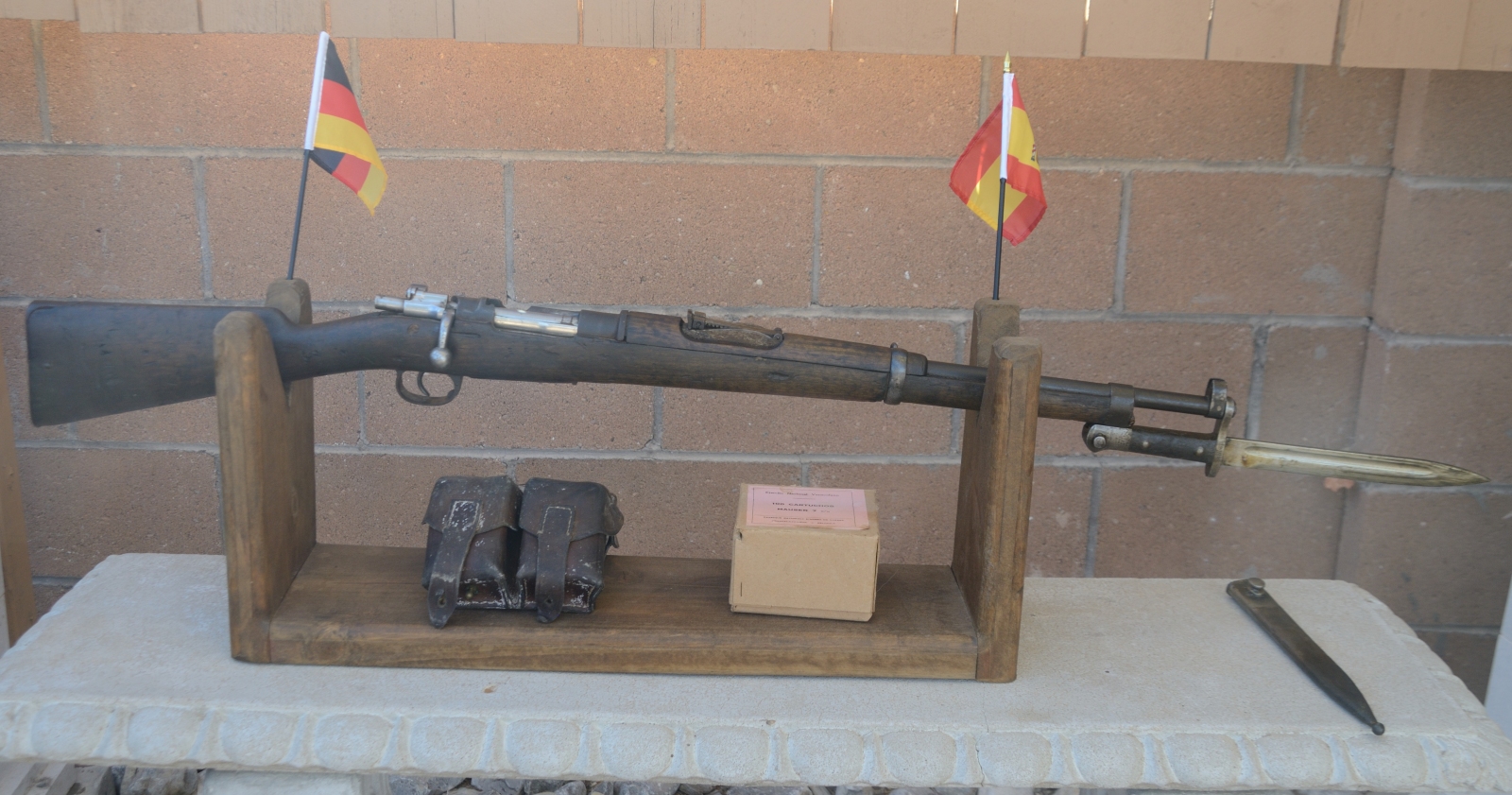


For additional photos, cut & paste the link below to your browser:

Please view the photos carefully & make your decision based on what you see as they form the main description & override all written information. These are not very common here in Australia so this is your opportunity to add this often overlooked & interesting military history to your collection.ĭo your own research & you will know if this is for you. Originally chambered in 7×57, many M1916 rifles were converted to either 7.92×57 or 7.62×51.ĬAL 7.62 is stamped on the left side of the receiver of this rifle just before the handguard indicating this is capable of shooting. As is correct, the stock & handguard are non-serialized. With 90% of the original finish on the rifle remaining & very good wood, with the usual dings & marks from service. This Spanish Mauser Model 1916 Short Rifle was manufactured by Fábrica de Armas & is in excellent condition as can be seen in the photos. Starting in 1943, many of the M1916 rifles were converted to fire the larger & more powerful 7.92×57mm Mauser cartridge, which Spain had adopted that year with the M43 rifle & in the 1950s, many of the M1893 & M1916 rifles were converted to accept the 7.62×51mm NATO (.308) round. Some of the M1916 guns were modernized in the 1950s & served even longer, though the widespread development of semi-automatic rifles after World War 2 quickly rendered the Mausers suitable only for second-line duties. They were still the standard rifle of some Spanish units during the Ifni War, the rifle being also used by their opponents of the Moroccan Army of Liberation. The 7mm chambered Mausers were replaced in Spanish service in 1943 by the Spanish M43, a derivative of the German Karabiner 98k which was chambered in the more powerful 7.92×57mm Mauser cartridge, though the M1893 & M1916 versions of the rifles remained in service in various capacities into the 1950s. The rifles were still in service during the Spanish Civil War of 1936–1939 on both sides of the conflict. Over the course of Spanish Mauser production, Fábrica de Armas built around 325,000 of the modernized Model 1916 rifles & this is one of them.
1916 SPANISH MAUSER 308 LICENSE
In addition to Mauser, the Spanish 1893 rifles were manufactured under license by a variety of other firms, including Ludwig Loewe & Company (and its successor, Deutsche Waffen und Munitionsfabriken) of Germany, Fabrique Nationale of Belgium, Fábrica de Armas & Industrias de Guerra de Cataluna of Spain. The converted rifles were used for training & for the Guardia Civil through the 1950s. The M1916 short rifles remained in production in Spain until 1951 & many of these later rifles were converted to shoot either 7.92×57mm Mauser or 7.62×51mm NATO, which is what this rifle is chambered in. All versions of the rifle saw extensive service in the Spanish Army, beginning in the Spanish–American War in 1898, the Rif War of 1920–1927 & the Spanish Civil War of 1936–1939. The M1893 was developed into several variants, including a shortened carbine adopted by the Spanish as the M1895 & as the M1913 & M1916 short rifles. These rifles featured a 21.75-inch (552 mm) barrel & were manufactured by Fábrica de Armas from 1916 to 1951 & Industrias de Guerra de Cataluña from 1936 to 1939. Beginning in 1913, large sight protectors were added to the front sight. The M1916 rifle had a bent bolt handle & a full-length stock with a lug for an M1913 sword bayonet. The M1893 introduced a short staggered-column box magazine that fit flush with the bottom of the stock & the magazine held five smokeless 7×57mm Mauser rounds, which could be reloaded quickly by pushing a stripper clip from the top of the open bolt.
1916 SPANISH MAUSER 308 SERIES
The M1893 was based on the experimental M1892 rifle, which Paul Mauser developed for the Spanish Army as part of a program to correct deficiencies in the earlier 1889, 1890 & 1891 series of Mauser rifles. The Mauser Model 1893 is a bolt-action rifle commonly referred to as the Spanish Mauser, although the model was adopted by other countries in different calibres, most notably the Ottoman Empire. The Model 1916 rifle was adopted on 14 November 1916 to replace the M1895 carbine which was itself a descendant of the Mauser Model 1893.


 0 kommentar(er)
0 kommentar(er)
